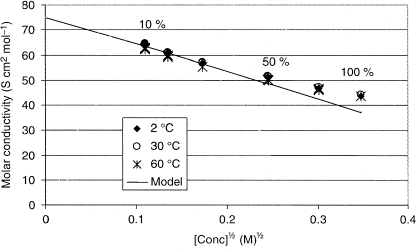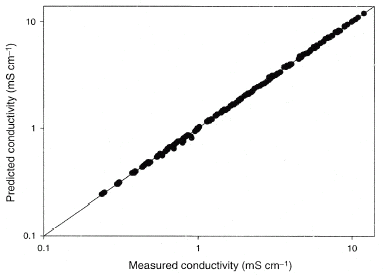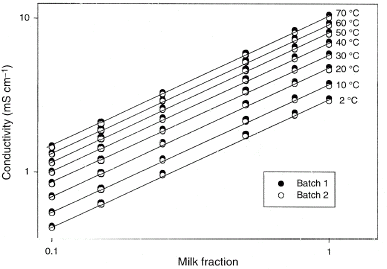Figures & data
Table 1 Some of the most common ions present in milk and their concentration, valence, and limiting molar conductivity
Figure 2 The relation between the conductivity of undiluted fat-free milk (K 0) and temperature. The experimental results from both milk batches are compared with Prentice's result.Citation[6]
![Figure 2 The relation between the conductivity of undiluted fat-free milk (K 0) and temperature. The experimental results from both milk batches are compared with Prentice's result.Citation[6]](/cms/asset/e2ab0eb0-25cf-4904-a9c9-b37b99b9ead4/ljfp_a_10345395_o_f0002.gif)
Figure 3 The experimental values at 2, 30, och 60°C in relation to Kohlrausch law and the Debye-Hückel-Onsager theory, assuming a molar concentration of 120.9 mmol L−1, an ion valence of 1.1, and a limiting molar conductivity of 75 S cm2 mol−1. Pronounced deviation from linearity is seen at 0.2 M1/2, corresponding to about 25% milk in water.

Figure 4 The predicted values from the model (Eqs. Equation(8)–(10)) vs. all the measured values.

